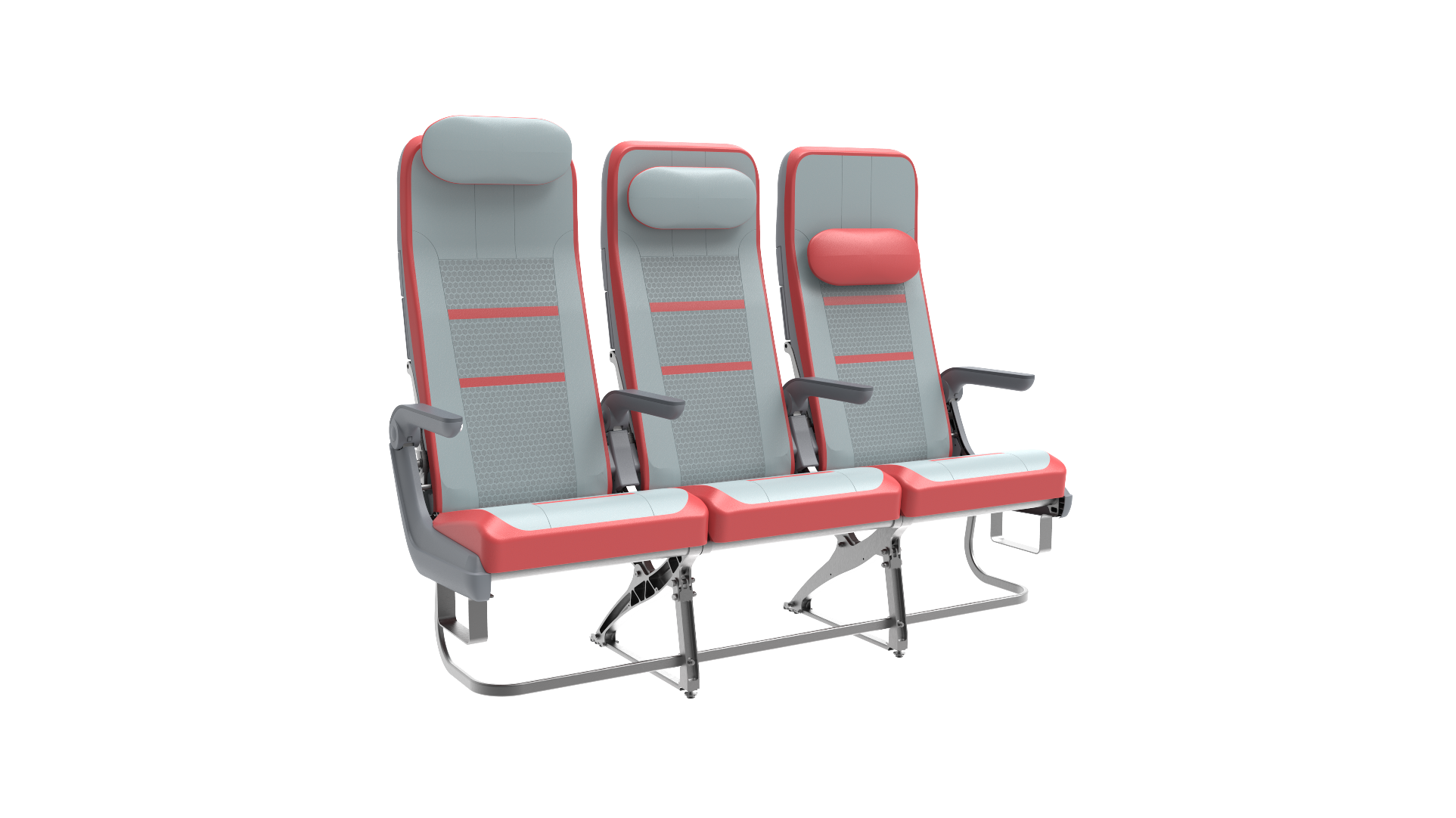
SINGAPORE—Singapore Technologies (ST) Engineering’s aerospace sector is looking to add value and synergy to its MRO capabilities by providing more customized cabin interior design solutions.
At the Singapore Airshow 2020, ST Engineering unveiled its long-haul economy seat concept, aimed at reducing weight and customer inventory by integrating additive manufacturing technologies. By replacing aluminum alloy with magnesium alloy in its seat structure, the seat features a 30% reduction in weight savings.
Catering to long-haul flights, the seat has 13.3-in. high-resolution screens and personal electronic device holders.
ST Engineering is also in the process of patenting its “Omni-Headrest,” which can be lowered and flipped down for children’s comfort. It has a seat width of 18.1 in. and maximum pitch of 35 in., although it will be certified for between 28-35 in.
Making full use of its additive manufacturing capability, seat components such as the armrest cap are designed to be replaced by on-demand 3D printing, thus reducing the need for airlines to keep a large inventory.
“We see potential synergy between our cabin design and MRO solutions,” ST Engineering Aerospace deputy president Jeffrey Lam said. “We aim to deliver bespoke solutions for our customers, and we have the ability to design, certify and assemble them as a full-value chain.”
Also new is ACCESS, touted as the world’s first expandable aircraft lavatory. Using a pull-out wall, it allows 40% more interior space in a narrowbody aircraft lavatory, giving space for a standard aircraft wheelchair as well as a caregiver to enter. As it is planned to be positioned by Door 4, where the emergency egress space is, the passenger with reduced mobility can utilize the feature only when the aircraft is cruising.
Compliant with U.S. Department of Transportation accessibility regulations, the lavatory is designed in cooperation with handicapped societies and the non-profit organization Acumen.
“We see a market in the U.S. and Europe as most of the societies there are promoting an inclusive society,” an ST Engineering spokesperson said. “We hope to attain FAA or EASA certification by the end of 2020.”
The ST Engineering cabin design team was set up in 2012, and in 2015 established a joint venture with Japan’s Tenryu Holdings to tap the latter’s expertise in bullet train and aircraft seat design.
